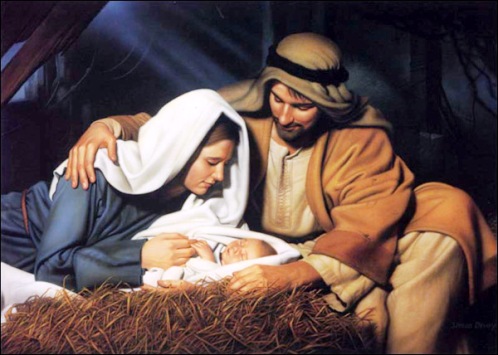New Year's Eve
Probably the most famous tradition in the United States is the dropping of
the New Year ball in Times Square, New York City, at 11:59 P.M.
Thousands gather to watch the ball make its one-minute descent, arriving exactly
at midnight. The tradition first began in 1907. The original ball was made of
iron and wood; the current ball is made of Waterford Crystal, weighs 1,070
pounds, and is six feet in diameter.
A traditional southern New Year's dish is Hoppin' John-black eyed peas and ham hocks. An old saying goes, "Eat peas on New Year's day to have plenty of everything the rest of the year."
Another American tradition is the Rose Bowl in Pasadena, California. The Tournament of Roses parade that precedes the football game on New Year's day is made up of elaborate and inventive floats. The first parade was held in 1886.
Fireworks: Noisemaking and fireworks on New Year's eve is believed to have originated in ancient times, when noise and fire were thought to dispel evil spirits and bring good luck. The Chinese are credited with inventing fireworks and use them to spectacular effect in their New Year's celebrations.
New Year's Day in United States
The start of New Year's Day, at midnight, is heralded by fireworks, parties and special events, which are often televised. Very few people have to work on the day itself. For many it is a day of recovery from the New Year's Eve celebrations the previous night. In some towns and cities, parades are held and special football games are played. The birth of the first baby in the New Year is often celebrated with gifts to his or her parents and appearances in local newspapers and on local news shows. Many people make New Year's resolutions. These are usually promises to themselves that they will improve something in their own lives. Common New Year's resolutions are to stop smoking or drinking alcohol, to lose weight, exercise more or to live a healthier lifestyle.
A traditional southern New Year's dish is Hoppin' John-black eyed peas and ham hocks. An old saying goes, "Eat peas on New Year's day to have plenty of everything the rest of the year."
Another American tradition is the Rose Bowl in Pasadena, California. The Tournament of Roses parade that precedes the football game on New Year's day is made up of elaborate and inventive floats. The first parade was held in 1886.
Widely Observed New Year Symbols and Traditions
Resolutions: It is believed that the Babylonians were the first to make New Year's resolutions, and people all over the world have been breaking them ever since. The early Christians believed the first day of the new year should be spent reflecting on past mistakes and resolving to improve oneself in the new year.Fireworks: Noisemaking and fireworks on New Year's eve is believed to have originated in ancient times, when noise and fire were thought to dispel evil spirits and bring good luck. The Chinese are credited with inventing fireworks and use them to spectacular effect in their New Year's celebrations.
New Year's Day in United States
New Year's Day falls on January 1 and marks the start of a new
year according to the Gregorian calendar. It marks the end of New Year's Eve
celebrations in the United States and gives many Americans a chance to remember
the previous year.
What do people
do?
The start of New Year's Day, at midnight, is heralded by fireworks, parties and special events, which are often televised. Very few people have to work on the day itself. For many it is a day of recovery from the New Year's Eve celebrations the previous night. In some towns and cities, parades are held and special football games are played. The birth of the first baby in the New Year is often celebrated with gifts to his or her parents and appearances in local newspapers and on local news shows. Many people make New Year's resolutions. These are usually promises to themselves that they will improve something in their own lives. Common New Year's resolutions are to stop smoking or drinking alcohol, to lose weight, exercise more or to live a healthier lifestyle.







